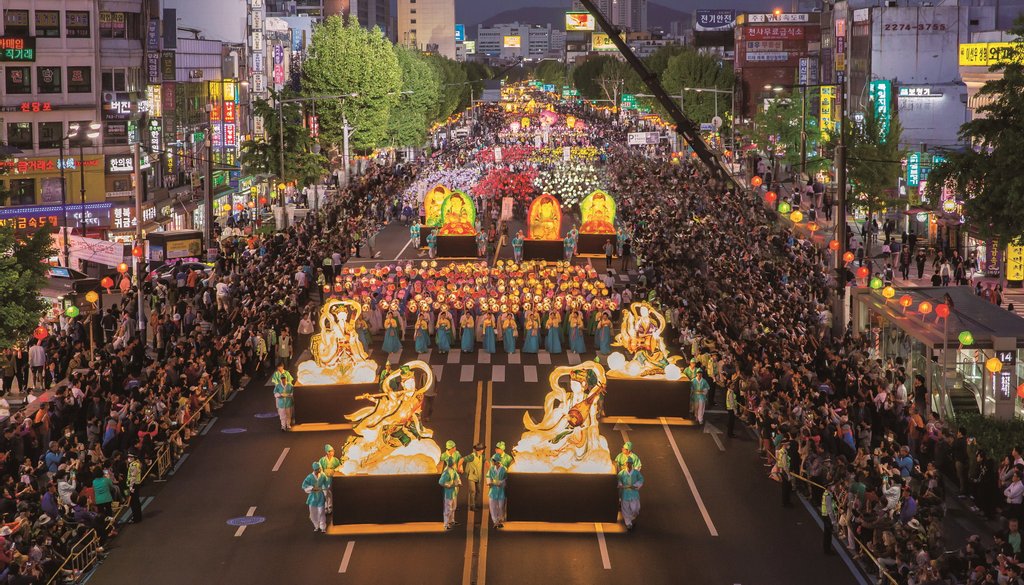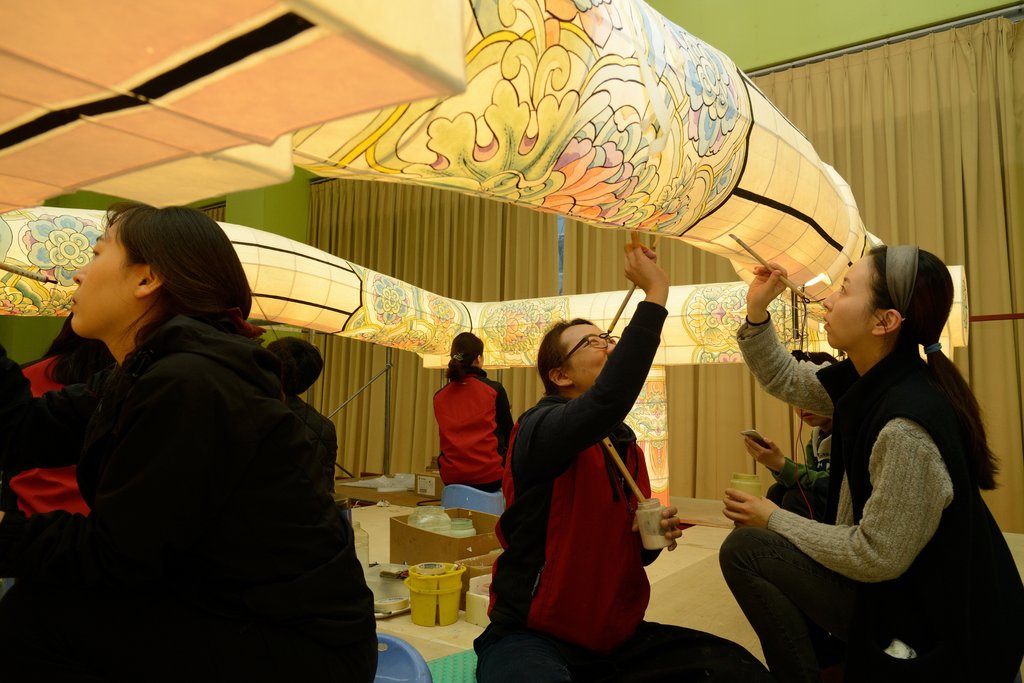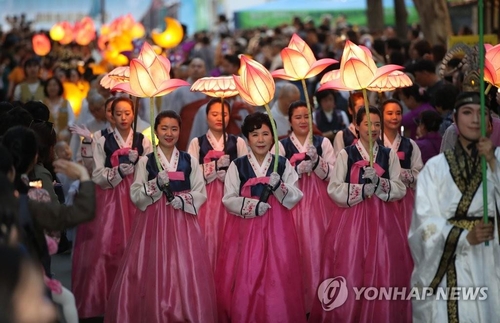- California Assembly OKs highest minimum wage in nation
- S. Korea unveils first graphic cigarette warnings
- US joins with South Korea, Japan in bid to deter North Korea
- LPGA golfer Chun In-gee finally back in action
- S. Korea won’t be top seed in final World Cup qualification round
- US men’s soccer misses 2nd straight Olympics
- US back on track in qualifying with 4-0 win over Guatemala
- High-intensity workout injuries spawn cottage industry
- CDC expands range of Zika mosquitoes into parts of Northeast
- Who knew? ‘The Walking Dead’ is helping families connect
S. Korea’s lantern lighting fest listed as UNESCO intangible cultural heritage
South Korea’s lantern lighting festival, a springtime event held to celebrate Buddha’s birthday, has been officially inscribed as intangible cultural heritage of humanity by UNESCO, the government said Wednesday.
The decision was made during the 15th session of the Intergovernmental Committee for the Safeguarding of the Intangible Cultural Heritage, taking place Monday through Saturday (France time), online.
It comes roughly a month after the panel preliminarily picked the Lantern Lighting Festival, or “Yeondeunghoe” in Korean, as one of the 25 successful candidates to be listed. Recommendations are rarely reversed.




This file photo, provided by the Cultural Heritage Administration on Nov. 17, 2020, shows a lantern lighting festival taking place in the country. (PHOTO NOT FOR SALE) (Yonhap)
The festival of lights, held annually in line with Buddha’s birthday on April 8 on the lunar calendar, symbolizes lighting up the world to make it an abundant and fair place for everyone. The Cultural Heritage Administration (CHA) designated it as a national intangible cultural asset in 2012.
The tradition dates back centuries. The “History of the Three Kingdoms,” depicting the ancient kingdom of Silla (57 B.C.-A.D. 935), tells stories of royals visiting a temple to see the lotus lanterns.
Once a religious ceremony, it has now evolved into a popular festival for the public. Lanterns made with paper and bamboo decorate temples and streets across the country, and parades also take place.
The government organization noted that this “inclusiveness,” which invites people who are not Buddhists, was factored into the committee’s decision.
“The Committee took note of the inclusiveness of Yeondeunghoe, which contributes to overcoming all social boundaries and to ultimately expressing cultural diversity,” CHA said. “The Committee also noted that the lantern lighting festival plays the role of sharing pleasure and, in times of difficulties, of enhancing social cohesion.”
With the inclusion of the festival, South Korea now has 21 intangible cultural assets inscribed as UNESCO intangible cultural heritage. They include pansori epic chanting, the royal ancestral ritual at the Jongmyo shrine and its music, as well as the culture of Jeju “haenyeo,” or women divers on the southern resort island of Jeju.
Most recently, South and North Korea both applied for the listing of “ssireum,” a traditional form of wrestling conducted in a sand pit. It successfully made the list in 2018 in the first joint inscription by the two Koreas.








![일본 사도광산 [서경덕 교수 제공. 재판매 및 DB 금지]](http://www.koreatimesus.com/wp-content/uploads/2024/07/PYH2024072610800050400_P4-copy-120x134.jpg)


